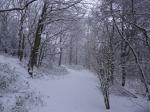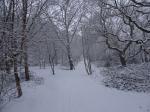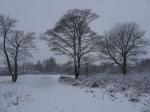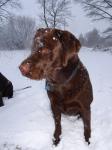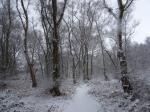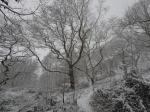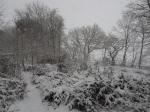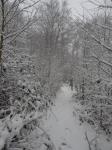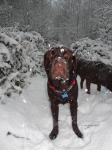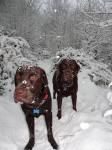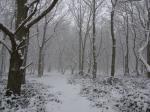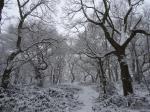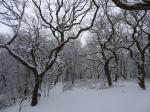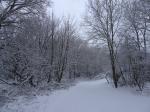Brayton Barff Through the Seasons.
Set in the Vale of York, South West of the market town of Selby and between the villages of Thorpe Willoughby and Brayton, lies Brayton Barff, a sandstone Hill approximately one hundred and fifty feet in height which was formed by glacial movement during the last Ice Age. It is a significant landmark in an otherwise flat landscape.
Today the site is primarily owned by Yorkshire Water with Selby District Council owning a small patch of the land adjacent to the A63 Selby bypass. A large underground reservoir occupies the centre of the site which delivers water to around 4.7 million customers throughout Yorkshire.
Within the Barff woodland over 40% of the trees are Sessile Oak which are generally found in semi natural woodlands in the north of the country. These trees are so called because its acorns are not held on stalks, like those of the English Oak (Pedunculate), but attached directly to the outer twigs. There are also several English Oak trees as well as some cross-hybrid oaks. These trees are known to support many species of flora and fauna, invertebrates, mosses, lichen and fungi.
During the Victorian times it is thought that the shipbuilders on the east coast would come over to the Barff for selected cuts of timber to build their sea going vessels.
The Barff also has a variety of other trees including Silver Birch, Beech, Sycamore, Holly, Rowan, Scots Pine, Alder, Hawthorne and European Larch. There are also several Yew, Willow, Hazel, Horse Chestnut and Wych Elm. As with similar woodlands there are a variety of bushes, including Honeysuckle, Elderberry, Gorse, Broom and Buddleia.
The history of Brayton Barff is quite vague, apparently during 1803 a beacon was lit on the Barff when the country was threatened with an invasion by Napoleon. In May 1935, to celebrate King George V's Silver Jubilee, a Bonfire was lit on the Barff as part of the celebrations.
Early issues of Ordnance Survey Maps dated 1903 clearly show a rifle range on the Barff, extending out to Mill Lane. During the 
Between 2001 – 2004 the A63 Selby bypass, 10km twin lane single carriageway was constructed which severed the South West corner of the Barff, adjacent to Selby Golf Course and resulted in a slight redesign of several holes on the golf course. Wooden fencing was erected as a result of this new road running alongside of the Barff and a footbridge constructed over the ‘new road’ following the line of the Bridal way which extends from Mill Lane. Around 2005/2006 a definite 2metre wide limestone aggregate footpath was laid forming a circular path around the outer edges of the woodland. This footpath is approximately 1.2 miles in length and takes about 30 minutes to circumnavigate at a leisurely pace.
In 2012 the Barff was declared an Ancient Oak Woodland and as such throughout 2012 and 2013 significant work had been carried out by the relevant agencies to cut and remove large swathes of non-native trees, creating at that time huge scars on the landscape. Some three years later the planting of the native trees have become well established and are flourishing. Ongoing maintenance work on the footpath around the bottom of the Barff was completed during the Summer of 2016.
A second phase of woodland maintenance commenced during the Autumn of 2019 with the removal of many old and diseased trees and the cutting back of the Gorse and Broom bushes, especially adjacent to the ‘bypass trail’, this work continued through till March 2020 with re planting continuing into April 2020.
Brayton Barff is a popular site for walkers and bird watchers alike and a path circling the outer perimeter of the Barff makes a pleasant thirty minute walk, giving views looking over towards Selby and the village of Brayton as well as the power stations of Drax and Eggborough..jpg)
For the early risers it is a great place to see some stunning sunrises over the villages of Brayton looking towards Drax Power Station, the same with the Sunsets looking over towards Eggborough and Monk Fryston.
The Barff changes with the Seasons and every visit can reveal something new, the woodland is a haven for wildlife. Records show that since 1982 one hundred and twelve species of bird have been seen in the woodland and at least 40 of those have bred here, including Tawny Owl, Buzzard, Green Woodpecker, Spotted Flycatcher, Goldcrest and Nuthatch to name just a few. On average over 70 species of bird are recorded each year. Further details of the bird life on the Barff can be found on the Brayton Barff Group Facebook page, especially the posts from Derek Cooper. Today ‘The Friends of Brayton Barff group’ led by Derek and a small team of volunteers help keep and maintain the cleanliness of the site as well as recording the wildlife and bird sightings.
The Barff is also home to fifteen different species of mammals, including Muntjac Deer, Pipistrelle Bat, Fox, and Field Vole.
Over eighty species of plant and wildflowers have been recorded, included Bee Orchid, Northern Marsh Orchid, Wood Anemone, Marsh Ragwort, Bluebell, White Bluebell, Bittersweet and Purple and White Foxgloves. Over twenty species of Butterfly have been recorded, including Marbled White, Brown Angus, Speckled Wood, Comma and Brimstone.
During the Autumnal months fungi thrives in this woodland environment, species including Fly Agaric, Beefsteak Tree Fungi, Chicken of the Wood, Sulphur Tufts, Stinkhorn, Ink cap, Puffballs and Hoof Bracket are just some of the many varieties that can be found here.
Click on the galleries shown below to expand the albums.
The Beast from the East 2018
Wednesday 28th February 2018
After several bitterly cold and frosty mornings over the past few days this morning was no exception other than the ‘Beast from the East’ had arrived in earnest in North Yorkshire overnight. The air temperature at 6.30am when I arrived on the Barff was -4C and with a wind chill of -5C it felt like -9C. We had about one inch of snow yesterday morning and although the roads were open and quite clear the weather started to deteriorate during the afternoon with more light snow flurries which continued during the evening.
This morning we woke up to a good two inches of overnight snow, the side roads were treacherous although the main roads where passable with care.
Needless to say it was quiet on the Barff when we arrived, the snow made it somewhat lighter than usual for this time of day (although it is light now at 6.30am) it was nice not to have to walk around with your headlamp on.
Meg and Gracie both thoroughly enjoy the snow, it is the first significant snowfall they have seen since they were born two years ago, Meg in particular likes running with her head on the ground, her nose acting as a snow plough until she gets that much snow up her nostrils she has to stop and have a sneeze to clear out her nasal tubes.
Whilst on the Barff as many of you will note I very rarely walk the main footpath and we spend most of our time off piste, I made an exception today, for part of the walk anyway, The main footpath made for some quite tricky walking in places as the fresh soft snow had fallen on the compacted frozen snow from yesterday, but with care I managed to stay upright and on my feet!
From the main car park we headed south and round to the old pumping station, the Barff was completely shrouded in a blanket of white snow, it is amazing how it transforms the landscape. As we walked past the pump house we ventured away from the main path and headed over towards the Bypass trail on the left, the snow was falling quite heavily making it quite unpleasant at times especially when the wind blew it under your jacket hood and you could feel the snow start to melt as it trickled down the side of your neck. Not much bird activity this morning, I heard the Greater Spotted Woodpeckers several times as I continued around the Barff, and watched several Grey Squirrels as they busily scratted at the ground to access their winter store of food. From the old farm I headed up the Barff and within a few minutes was standing on the top of Tap Hill, unfortunately such was the weather this morning that the view from the top was pretty poor, you could barely see the car park at the bottom. I was wondering what it was going to be like up here in a few hours’ time when the children are here with their sledges, daring to head off down the steep slope. No doubt on my rounds tomorrow morning there will be the usual debris left lying all over the place. We continued our walk off the top of the Barff, following what I call the middle path, of late this part of the walk has been quite muddy, especially the section just past the old Oak tree where the children swing on at every opportunity whilst on the Barff. Today the route was fine, the ground was quite firm underfoot which made quite a change, what was tricky though was the weight of snow on a lot of the young trees and bushes was weighing the branches down a lot more than usual and I was constantly having to duck to avoid getting another face full of snow. As the light improved there was a little more activity amongst our bird population with Chaffinch flitting from tree to tree, the white flashes on their tail feathers being quite distinctive in the gloomy morning light. It was nice to hear the shrill call of the Nuthatch too hoping to attract a mate, I could hear the tiny shrill calls of the Long tailed tits but unfortunately couldn’t see them this morning, I love the way these birds all cuddle up with each other whilst roosting on a branch, protecting themselves from the icy easterly winds and snow. Great Tits and Robins seemed to be following me on my walk this morning, the Robins especially, there always seemed to be one in front of me all the time.
As I continued around the Barff I followed the path up to the Yorkshire Water work shop near the summit, following the fencing till I reached the summit of Tap Hill again, this time we followed the perimeter fence around the top, this is a route I only tend to walk in the summer as it gets really muddy, today though the mud had frozen and the covering of snow made a pleasant change to slipping and sliding all over the place. It is only a short ten – fifteen minute walk around the top arriving back on the Summit of Tap Hill for a final view looking over Selby below, unfortunately the visibility was still poor so it was just a picture of grey snow laden skies. From the summit it was a steady walk down the hill and back to the car for the short journey home.
|

